Agitators
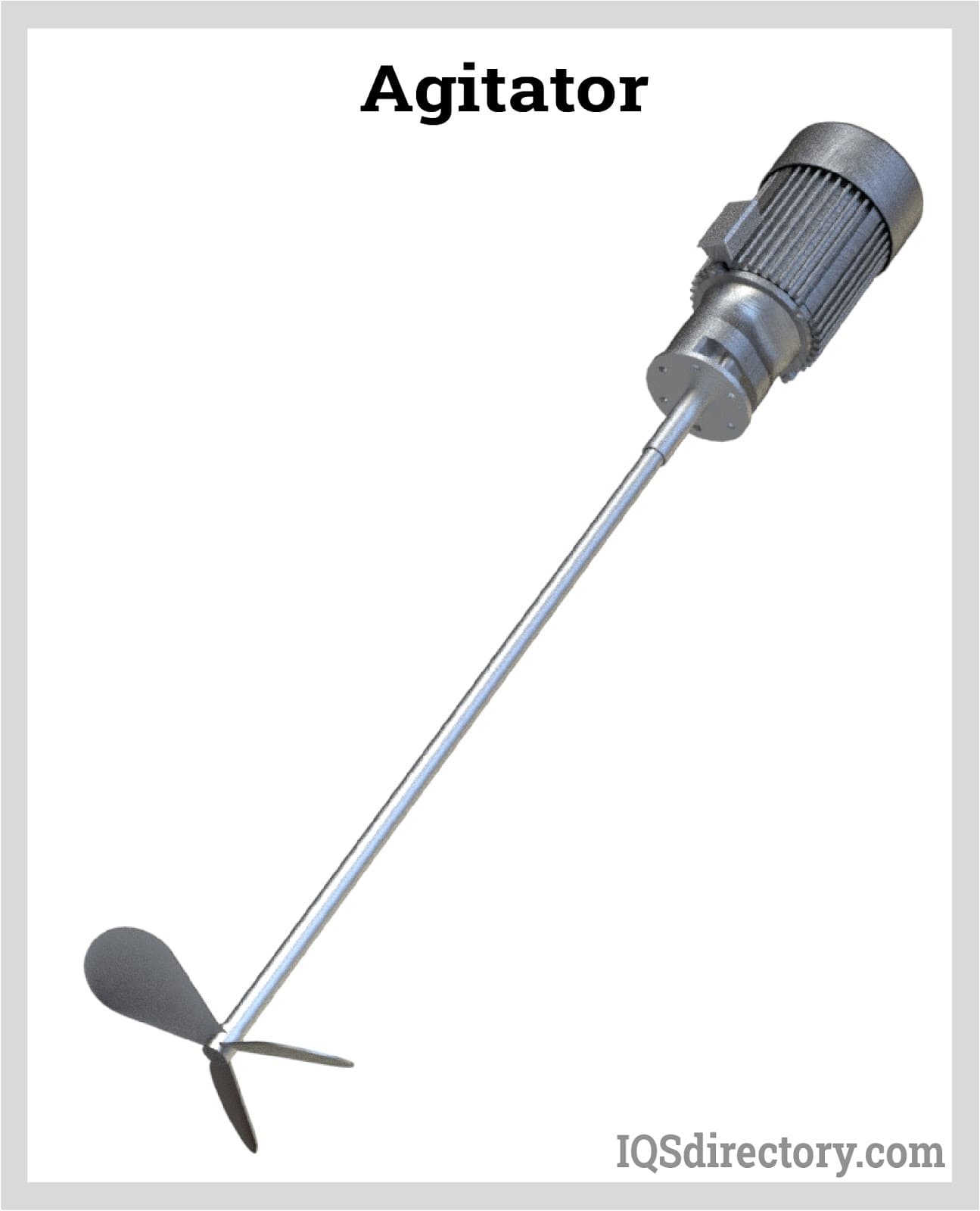
Agitators are equipment used in homogenizing media inside a tank. It works by rotating the impeller at its immersed end at a controlled speed or revolutions per minute (rpm). The work exerted by...
Please fill out the following form to submit a Request for Quote to any of the following companies listed on
This article takes an in-depth look at homogenizers.
Read further to learn more about topics such as:
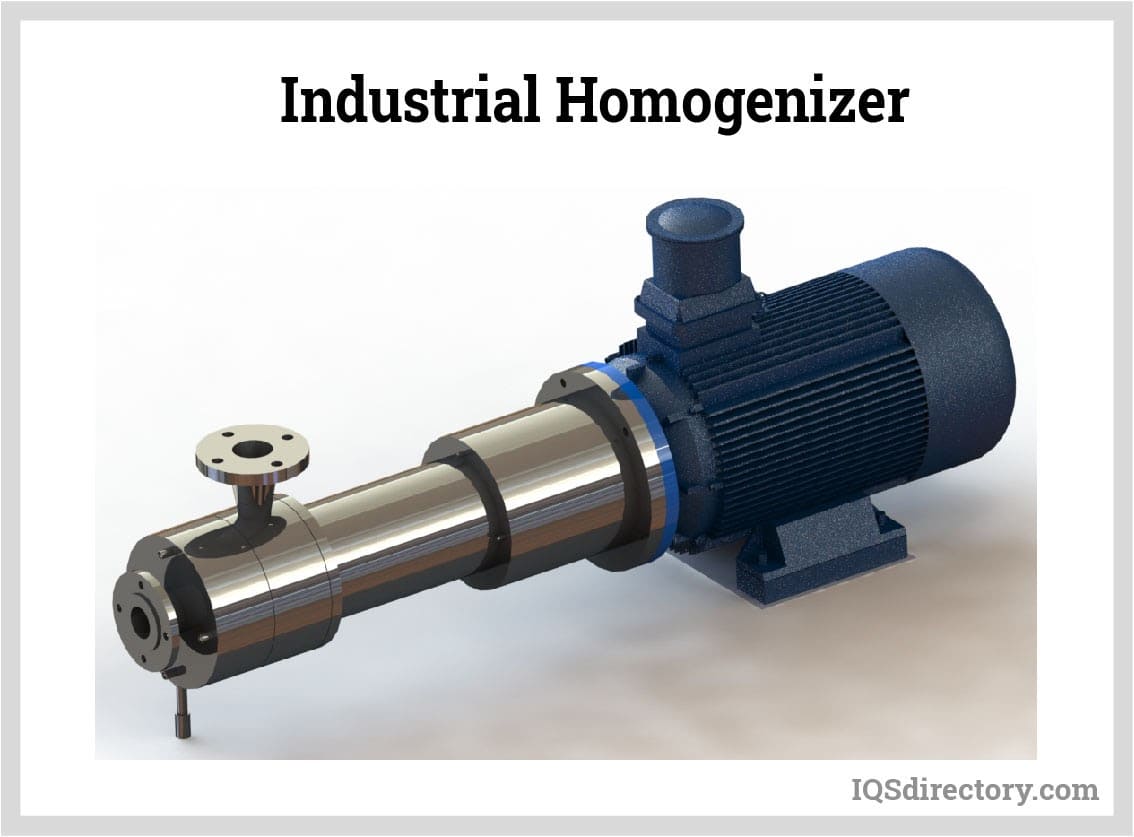
A homogenizer is a specialized mixing device designed to create a uniform and consistent blend by forcing substances through a restricted passage. Various forces such as turbulence and cavitation, along with high pressure, are applied to homogenize the solution contents evenly. Homogenizers are equipped with a positive displacement pump and a homogenizing valve configuration. The pump propels the material under pressure through a small gap situated between the valve seat and valve itself. This pressure-induced flow and subsequent turbulence ensure thorough mixing. Many industries depend on homogenizers for producing stable, uniform, and reliable products, beyond just mixing. Homogenizers are also used for emulsifying, suspending, grinding, dispersing, and dissolving materials. Industries like pharmaceuticals, beverages, and chemicals capitalize on homogenizers for enhancing product quality and consistency.
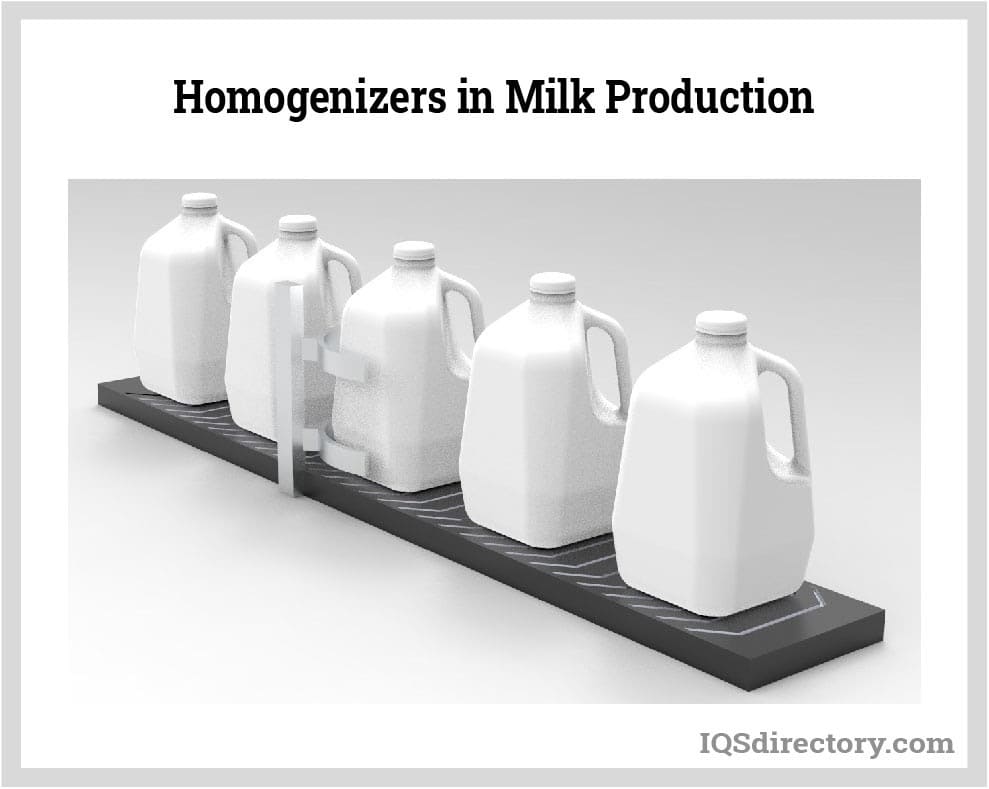
Homogenizers are frequently paired with high shear mixers, batch mixers, and paddle mixers, and are installed downstream to achieve finer mixtures. Some homogenizers, however, have limitations when it comes to processing materials with highly coarse particles, as this can lead to increased energy use, reduced flow rate, heat buildup, and accelerated wear on materials. Upstream mixers help condition and prepare materials through premixing before the homogenization process begins.
The invention and evolution of homogenizers started in the early 20th century with Auguste Gaulin’s groundbreaking design for milk homogenization. His apparatus included a three-piston positive displacement pump and capillary tubes at the outlet, which acted as throttling devices, converting fluid pressure into velocity. Consequently, milk droplets were driven against a concave valve located downstream from the capillary tubes.

Subsequent refinements in homogenizer technology replaced multiple capillary tubes with a singular, narrow tube. The key innovation was the narrow gap inside this tube, where the primary homogenization process took place. This advancement led to various gap geometries, further expanding and improving the equipment's range of applications and effectiveness.
Over the years, several theories have emerged regarding the homogenization process using high pressure. The two most widely accepted theories today are globule disruption by turbulence and cavitation. These theories illustrate how various forces influence the homogenization process.
The globule disruption by turbulence theory suggests that as a liquid jet exits through a gap, small eddies or micro whirls form. With increased pressure, the velocity of these jets rises, creating smaller, more energetic eddies. When droplets within these eddies collide with similarly sized droplets, they deform and break apart. This theory posits that the degree of homogenization depends on the applied pressure.
Cavitation theory, on the other hand, explains that pressure fluctuations during homogenization create bubbles or cavities in the liquid. As these bubbles grow and then collapse or cavitate, they release energy. The collapsing bubbles generate high-speed jets that impact and break apart particles in the liquid. The energy released by collapsing bubbles directly affects the particles, creating turbulence and enhancing the cavitation effect.
Homogenizers are commonly used to mix emulsions and suspensions. An emulsion is a mixture of two or more liquids that usually do not mix well due to their inherent phase separation, influenced by factors like surface tension, polarity, and viscosity. When these emulsions are homogenized, they are often referred to as colloids, a term that encompasses a broader range of mixed substances.
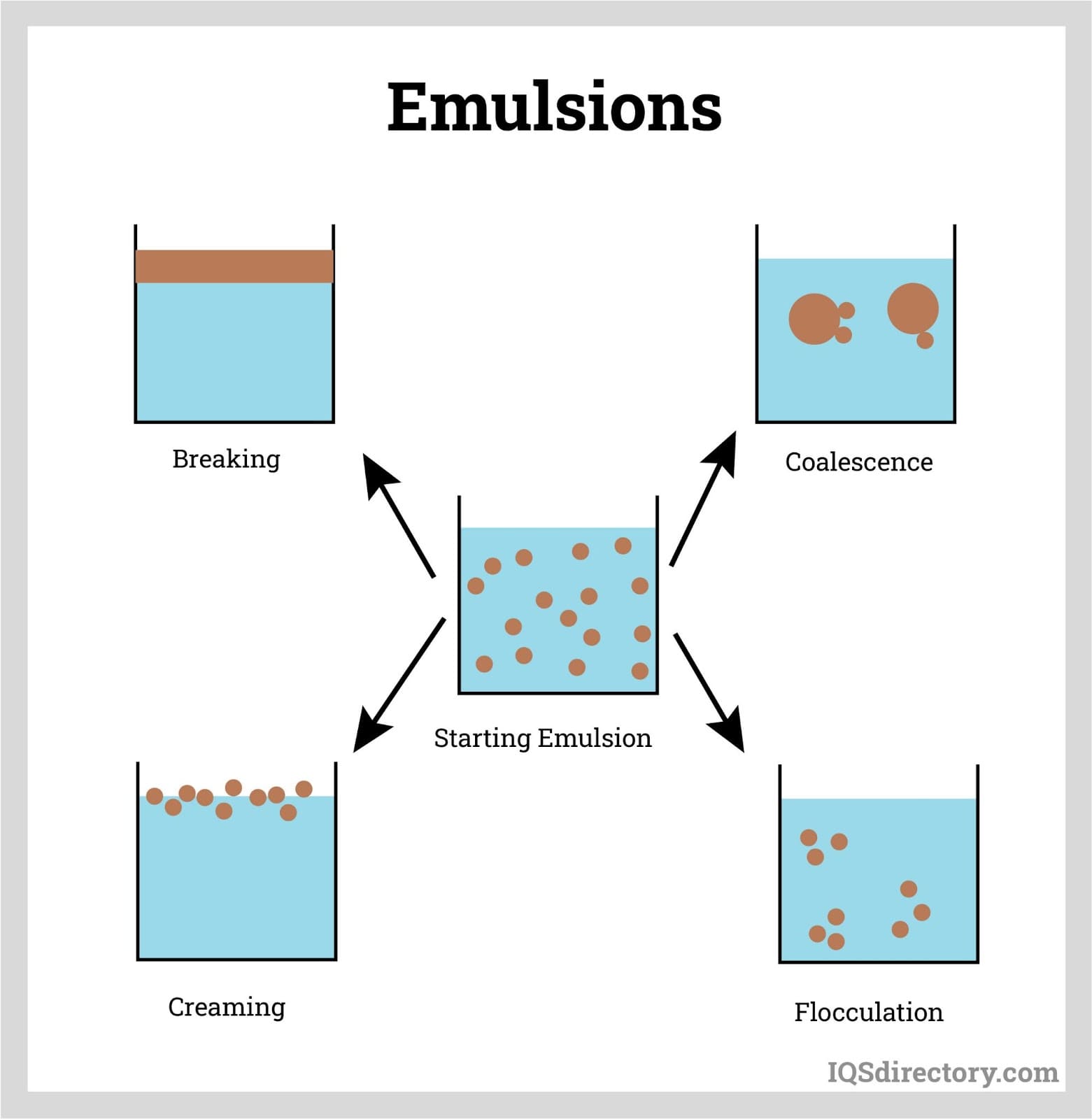
A suspension is a mixture containing solid particles that do not dissolve completely and eventually settle out. These solid particles are significantly larger—ranging from hundreds to thousands of times larger—than the particles in a homogeneous solution. Suspensions are non-homogeneous and feature particles that are about 100 times larger than those in a solution.
Particles in suspensions can vary in size, with some being visible to the naked eye. Homogenization plays a crucial role in integrating suspensions with solutions by providing the necessary force to blend them effectively.

Understanding the types of heterogeneous mixtures processed by a homogenizer clarifies its operation. A homogenizer functions by breaking down or subdividing the dispersed components into smaller particles and evenly distributing them throughout the mixture. The device continuously disrupts the formation of large particles caused by immiscibility and precipitation.
Homogenization occurs within the homogenizer valve, a key component of the equipment. Historically, the first homogenizer valve used a capillary tube and a concave valve. The capillary tube throttled the fluid pressure into kinetic energy, while the concave valve acted as an impact surface for the fluid jet. Modern designs have replaced the capillary tube with a seat that aligns with the valve, creating a small gap for throttling the flow. This gap ensures optimal flow conditions for homogenization through various physical principles.
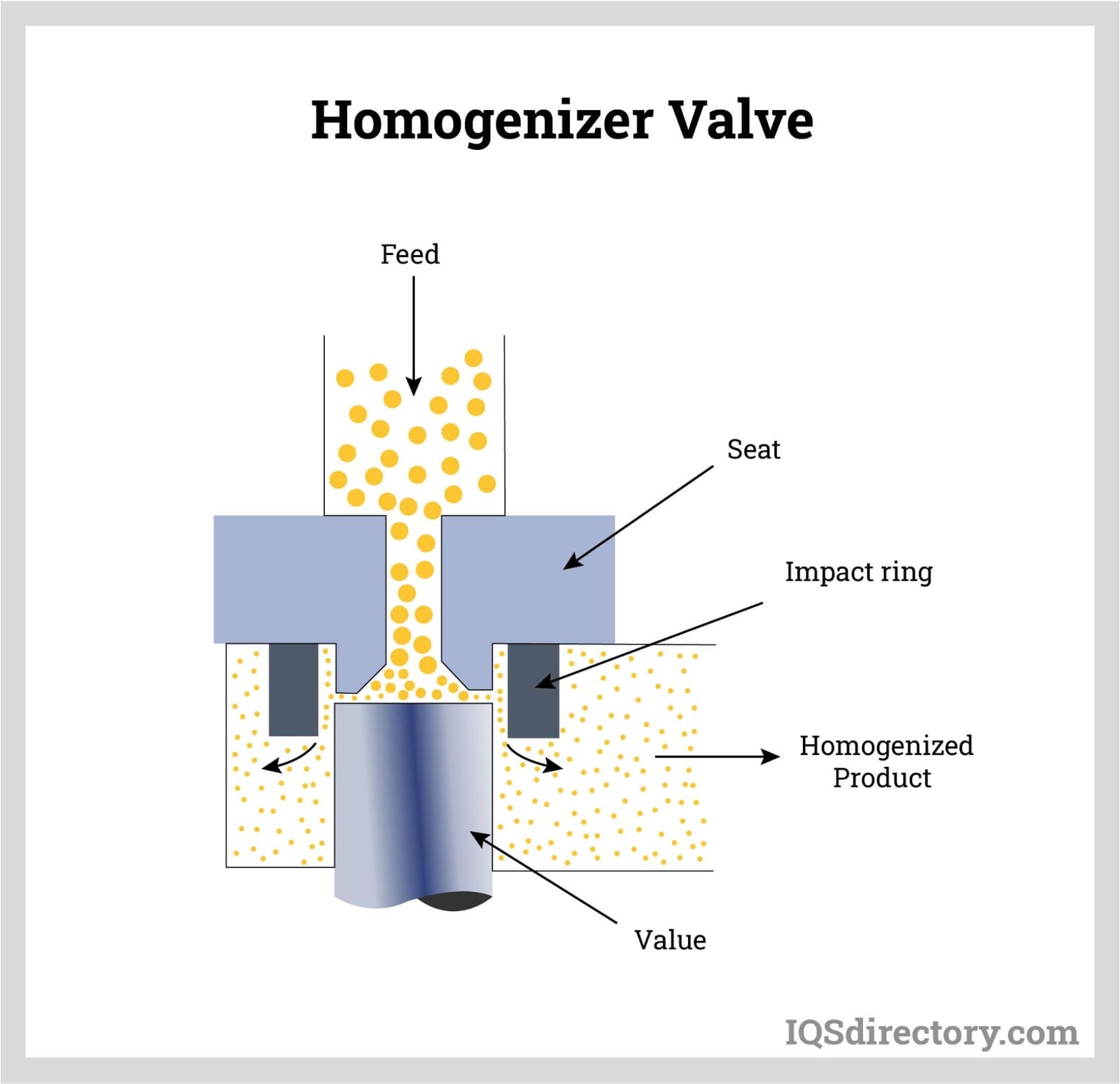
The homogenizing action results from the combined effect of three primary physical principles:
Shearing in fluids occurs due to friction between fluid molecules, driven by viscosity. In a no-slip condition, adjacent fluid molecules move at the same velocity. However, disruptions like acceleration from a rotor-stator or deflection from an impact ring create varying velocities due to the fluid’s internal friction. At the boundary layer—the region between the homogenizer surface and the fluid—the velocity of the fluid is zero. Away from this layer, the fluid velocity approaches that of the no-slip condition. When large particles or droplets are trapped between fluid layers with differing velocities, shear forces break them down into smaller sizes.

Cavitation occurs when there is a significant reduction in fluid pressure. Generally, a pump is used to introduce the fluid at high pressure before it reaches the homogenizer valve. As the fluid flows through the valve, its pressure is converted into kinetic energy. If the pressure drop is substantial, the fluid’s vapor pressure can surpass the absolute pressure within the homogenizer, leading to the temporary creation of vapor cavities. The collapse or implosion of these cavities generates shockwaves that disintegrate particles and droplets within the mixture.
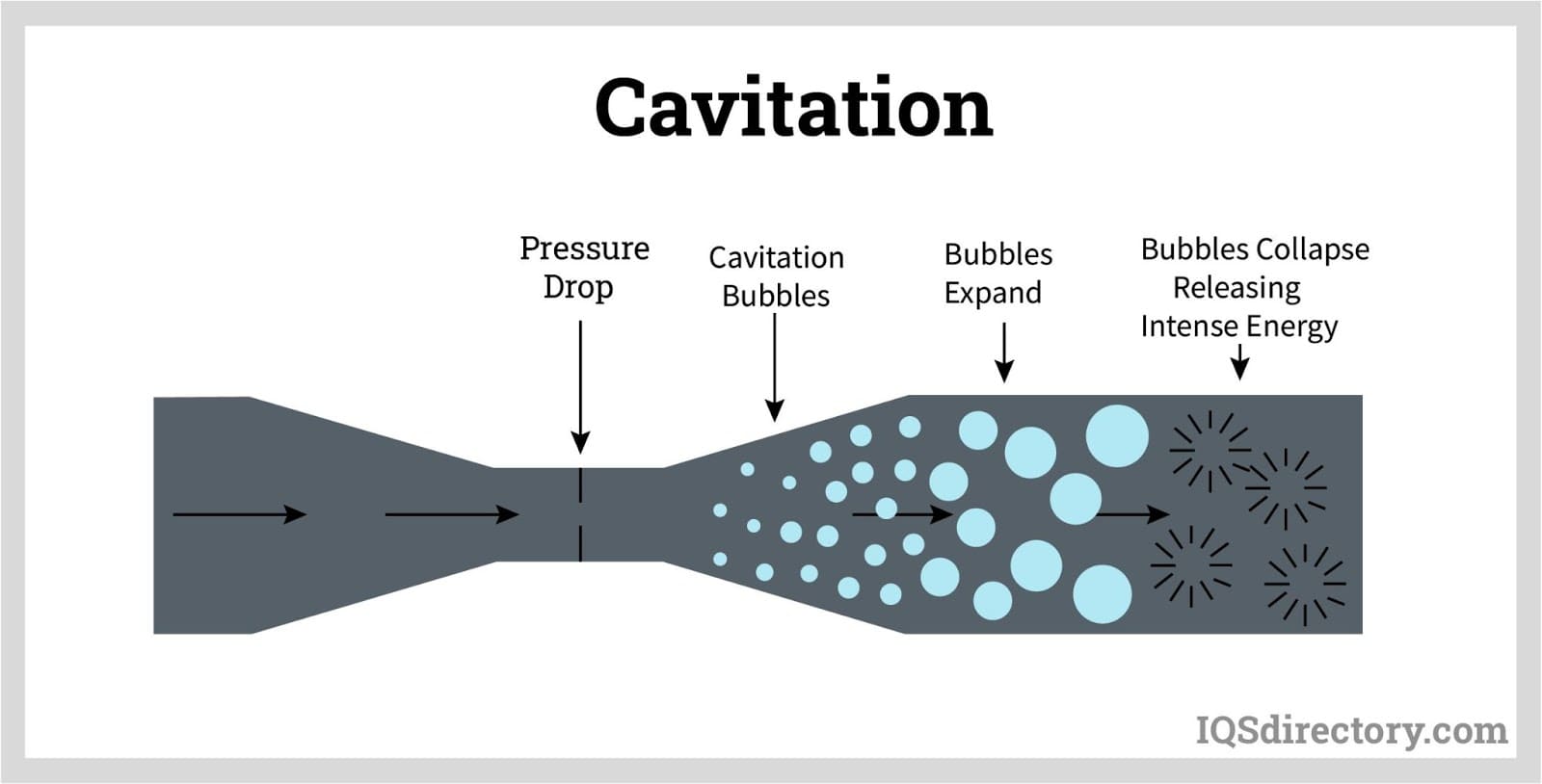
The final physical principle in homogenization is turbulence. This phenomenon arises when the fluid reaches high velocities, resulting in chaotic and irregular motion. This irregular motion leads to energy dissipation, where the fluid's kinetic energy is transformed into internal energy through eddy currents and some heat. These eddies contribute to breaking down particles into smaller sizes.

The degree to which each physical effect influences the homogenization process is determined by the design of the homogenizer valve and the properties of the fluid, including temperature, pressure, composition, and viscosity. However, most research suggests that turbulence is the dominant mechanism driving homogenization.
Shearing, cavitation, and turbulence effects can also be produced by other mechanisms beyond the traditional homogenizer valve. Although these alternative methods function differently from the original homogenizer, they achieve similar homogenizing results.
The high-pressure homogenizer (HPH) is one of the earliest industrial homogenizers and is often discussed in this article. Its effectiveness and adaptability have made it a prevalent choice in industrial and manufacturing environments.
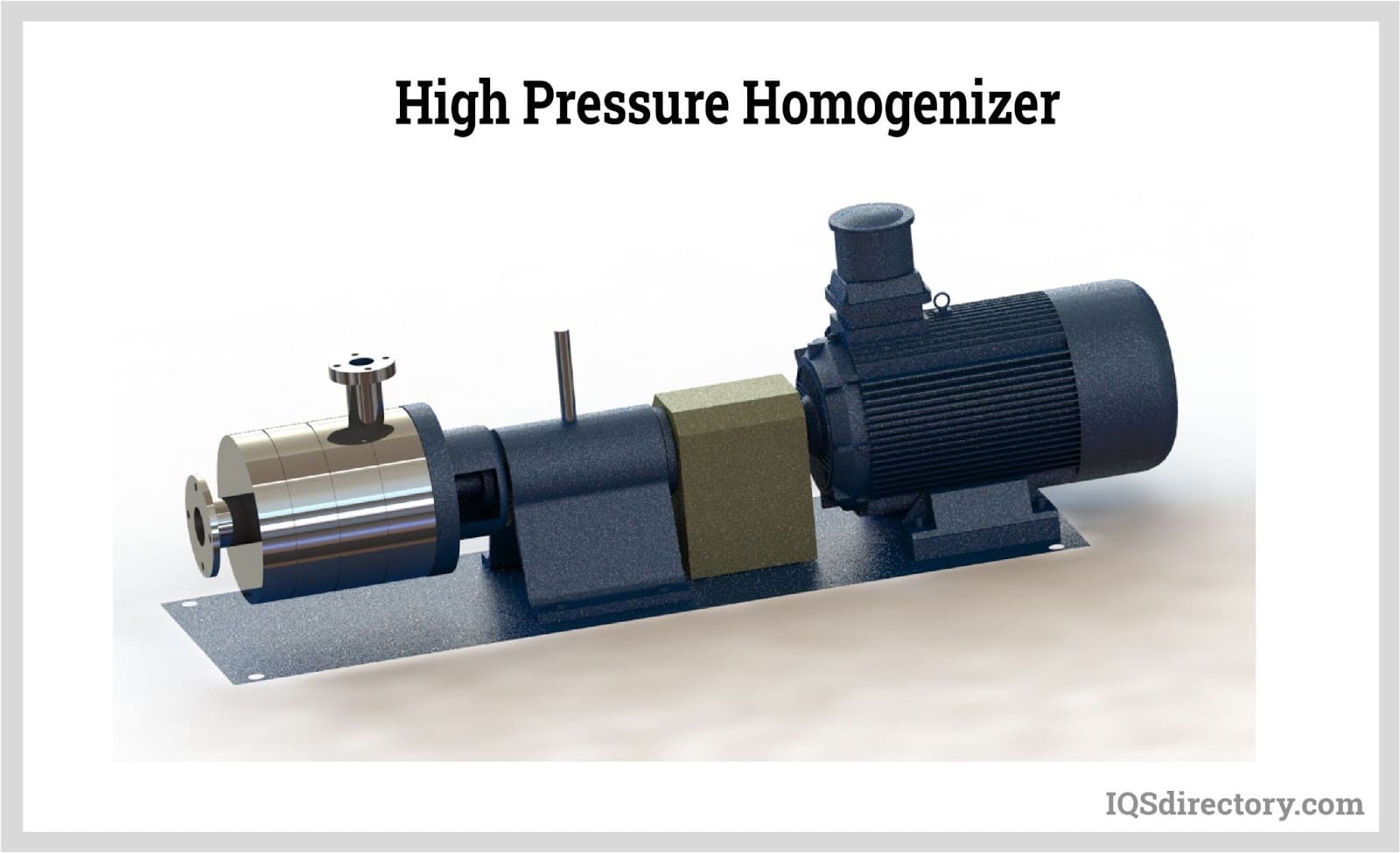
High-pressure homogenizers, also known as piston homogenizers, feature a high-pressure pump paired with a homogenization valve. The pump used is a positive displacement reciprocating type, well-suited for handling viscous fluids while maintaining efficiency despite variations in flow and pressure. These homogenizers typically have three or more pistons or plungers. Opting for a pump with multiple plungers helps stabilize fluid delivery to the homogenizer valve and reduces equipment vibration.
The pressure generated by the pump varies based on the fluid type. In the food and pharmaceutical industries, homogenizers generally operate at pressures ranging from 8,000 psi to 40,000 psi (550 bars to 2,750 bars).
The homogenization valve, which consists of a seat, valve, and impact ring, facilitates the homogenization process. As the fluid passes through this valve, its velocity increases, creating turbulence. This turbulence generates eddies that help break down the fluid components. The narrow gap between the seat and the valve produces strong shearing forces, aiding in the disruption of particles. Additionally, cavitation occurs as the fluid exits the gap, with the resulting shockwaves from collapsing cavities further breaking down components, thereby enhancing the homogenization process.
The homogenizer valve is crucial to the homogenizer assembly. Various types of valves exist, each with its own set of advantages and limitations, making them suitable for specific applications. Below, we explore the different types of homogenizer valves.
The radial diffuser valve, often referred to as the standard valve, is widely used across different industries. It includes a plug and a seat, with many designs featuring an adjustable seat to modify the gap between these two components.

In this homogenizer valve type, the premix fluid flows axially before being redirected 90° by the plug. This redirection forces the fluid to move radially through a narrow gap. Upon leaving the gap, the fluid stream impacts an annular surface known as the impact or wear ring.
A key benefit of the radial diffuser valve is its capability to regulate homogenizing pressure by adjusting the gap size, while maintaining a constant flow rate.
An axial flow valve is similar to an orifice valve, utilizing a small gap created by an orifice, a venturi, or a short tube. Some designs include a movable needle to adjust the gap, which is aligned axially—hence the name. This design bears similarities to the radial diffuser valve, which also employs a plug to manage fluid flow.
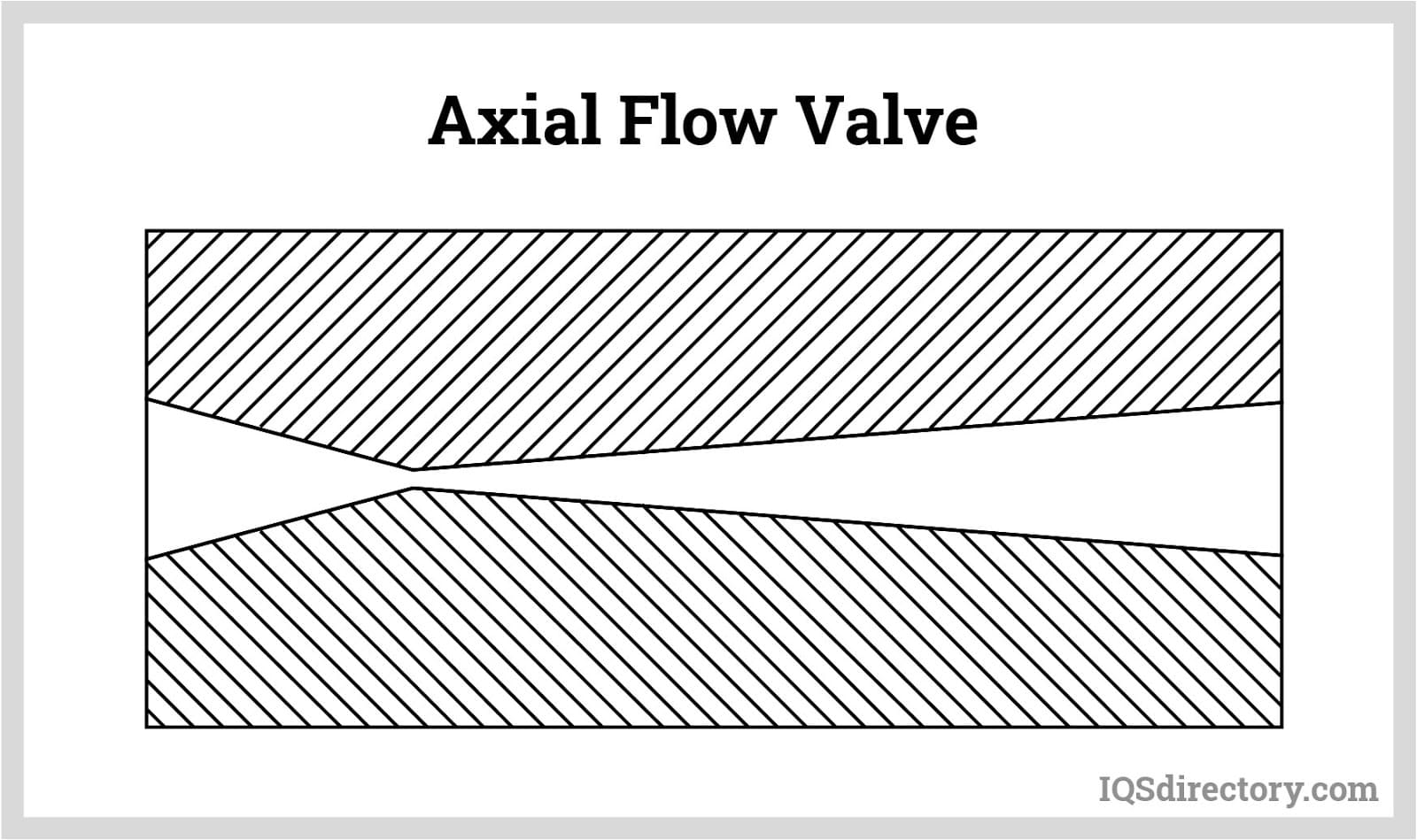
As the premix flows axially through the orifice, shearing, cavitation, and turbulence occur within the narrow gap. Unlike radial diffuser valves, there is no impact chamber to expand the fluid jet upon exiting the gap.
The design of axial flow valves can differ based on pressure control methods. Valves with static components adjust homogenizing pressure by varying the flow rate, while those with a moving needle control pressure by modifying the gap size.
In a counter jet valve, the incoming premix fluid is split into two or more streams through microchannels. These microchannels act as the gap for homogenizing the fluid. The streams exit at high velocities and collide with each other within a small area known as the interaction chamber.
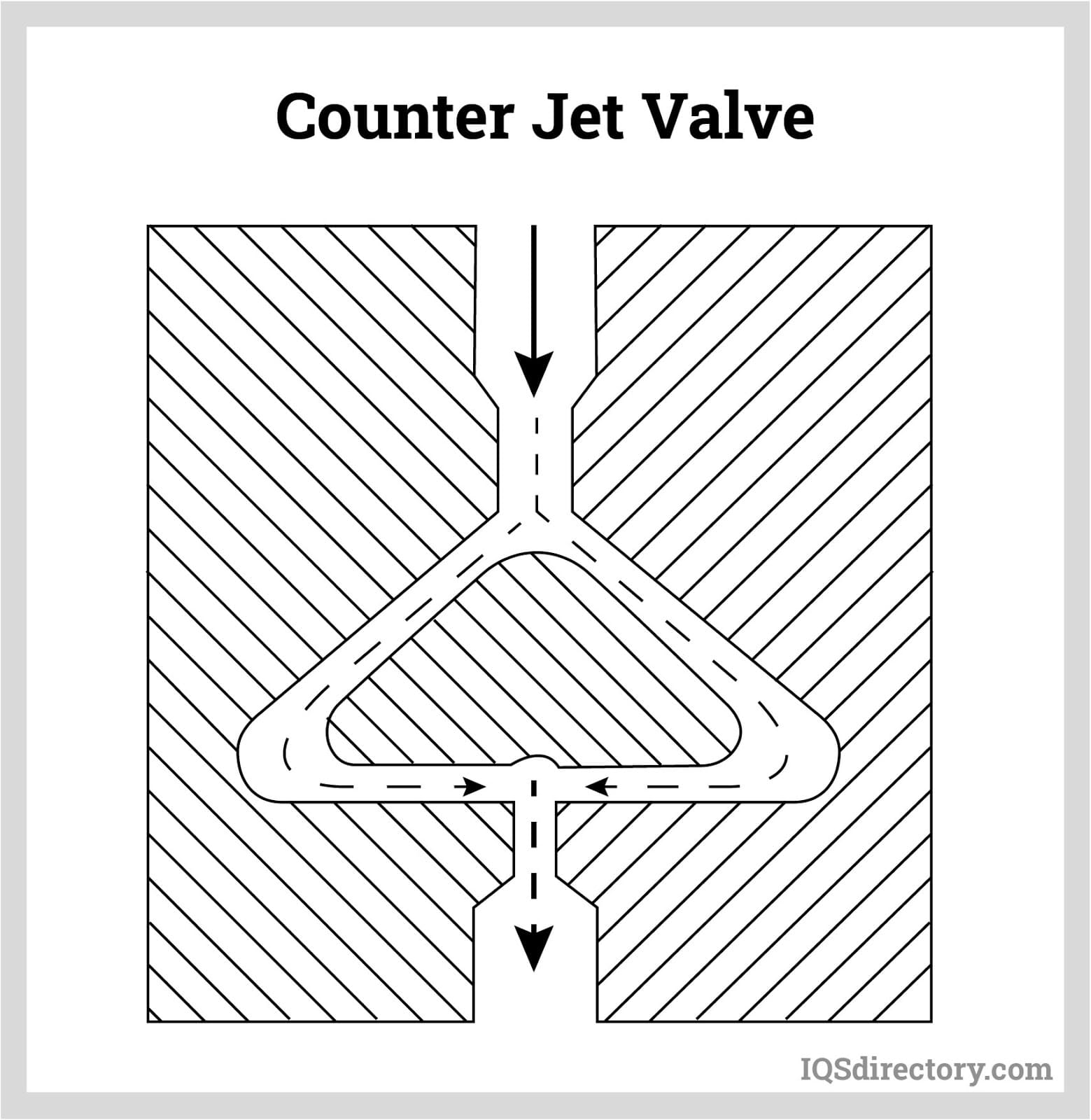
The advantage of the counter jet valve lies in its lack of moving parts, which enhances its reliability compared to radial diffuser valves. Additionally, the absence of an impact ring eliminates wear issues caused by constant fluid impact.
However, this valve type relies on flow rate to manage homogenizing pressure. Moreover, because it splits the premix stream into multiple channels, it requires a high flow rate to function effectively. This requirement can limit the maximum homogenizing pressure achievable with the valve.
In a microfluidizer, the product flows into an inlet reservoir and is drawn into a pumping system that injects it into an interaction chamber at pressures up to 30,000 psi. Within the chamber, the product experiences high shear rates, energy dissipation, and impact forces as it moves through microchannels. These forces cause collisions with the chamber walls and the product's own particles, leading to cell disruption and consistent droplet size reduction.
Mechanical homogenizers utilize mechanical work to break down the components of the premix. They operate similarly to high shear mixers, allowing the introduction of the premixed fluid at atmospheric, low, or medium pressures—much lower than those used in high-pressure homogenizers. Instead of a valve, mechanical homogenizers use rotating elements such as cones, blades, and paddles. These rotors are paired with an appropriate stator to create optimal homogenization conditions. The process relies on mechanical tearing from the moving parts, though the core physical principles of particle disruption still apply.
Here are some of the most commonly used types of mechanical homogenizers.
A colloid mill is a type of homogenizer featuring a conical rotor and stator. The rotor and stator are positioned with a narrow gap through which the premix flows under the influence of shear and centrifugal forces. As the premix is fed into the rotor-stator unit from a hopper, it is propelled outward through the exit slots or holes. The rotor's high-speed rotation, ranging from approximately 3,000 to 15,000 rpm, generates significant shear forces that break down the premix components. Additionally, the rotor's acceleration of the fluid achieves high velocities, leading to the development of turbulence.
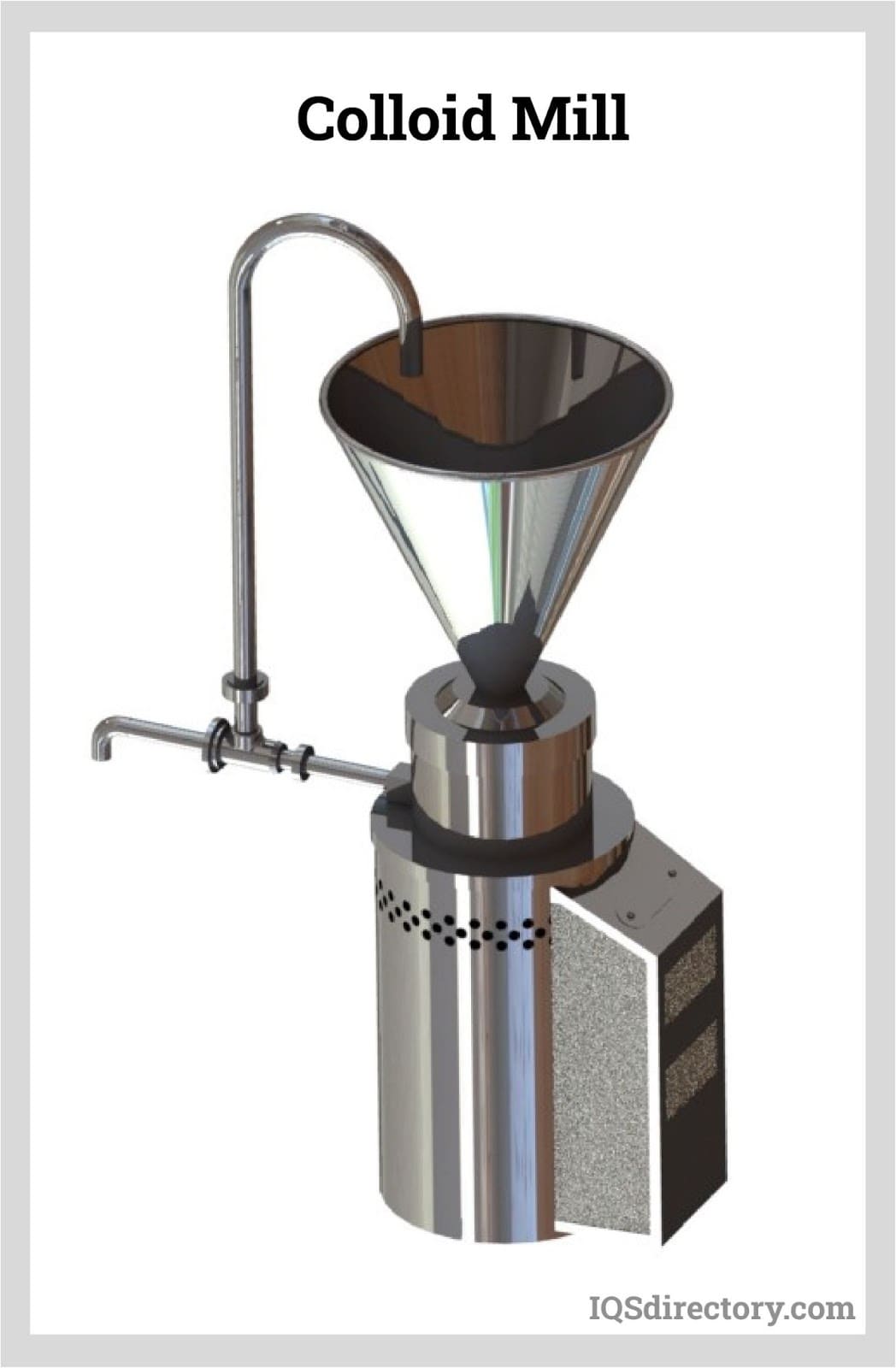
The level of shearing in a colloid mill can be controlled by adjusting the gap between the rotor and stator. However, reducing this gap can decrease the product's flow rate, which limits the fineness of the particle size compared to high-pressure or ultrasonic homogenizers.
Colloid mills are particularly effective for handling highly viscous materials or products with a significant amount of suspended solids.
These homogenizers have a construction that closely resembles high-shear mixers. The rotor-stator unit, often referred to as a mixing head, generator, or probe, is inserted into a container such as a batching tank or vessel where it performs the homogenization of the premix fluid.
Rotor-stator homogenizers operate by accelerating the fluid in a tangential direction. However, due to fluid inertia, the fluid does not completely synchronize with the rotor's motion. Instead, it is directed towards the shear gap, the space between the rotor's edge and the stator. This results in high-velocity differentials and turbulent flow within the shear gap, leading to high shear rates. The resulting particle size is influenced by the design of the rotor and stator, including their separation distance and any additional features like holes and slots.
The materials are drawn into the rotor-stator system in a spiral motion due to the high-speed rotation. The combined action of suction and high shearing forces in the shear gap processes the fluid. Rotor-stator homogenizers are not suitable for solid samples and can be labor-intensive when processing multiple samples.

Bead mills, also known as ball mills, use beads as grinding media to mechanically crush and break down large particles suspended in the premix fluid. These beads create strong impact and shearing forces that reduce particle size effectively.
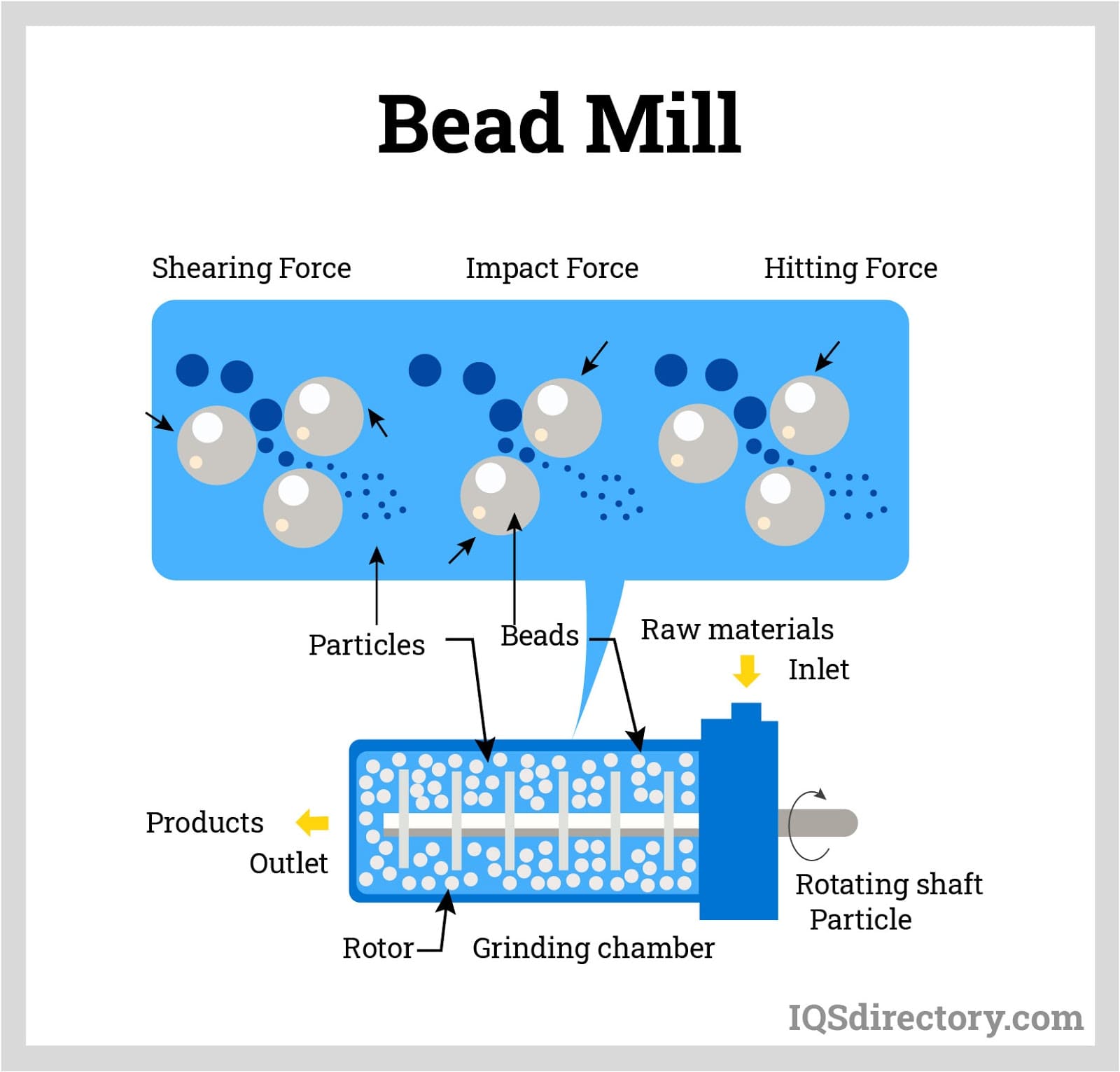
The beads are loaded inside the container and are in contact with the premix fluid. They are then agitated by internal, rotating components such as paddles and blades. Agitation can also be done by centrifugally spinning the container at extremely high speeds. Agitation using rotating components is typically seen in larger homogenizers in line with the production stream. Agitation through a centrifugal action is commonly used in laboratories for preparing homogenized product samples.
These homogenizers utilize blades as their rotors, and unlike colloid mills and rotor-stator homogenizers, they lack a shear gap formed with a stator. The shearing action is achieved solely through the high-speed rotation of the blades. Their design and functionality are similar to those of a blender.

Blade-type homogenizers generally offer lower efficiency compared to rotor-stator models. While they are effective at creating well-emulsified and dispersed mixtures, they do not achieve the fine particle sizes produced by other homogenizer types. To enhance their homogenizing performance, abrasive media like beads can be employed.
Ultrasonic homogenizers, also referred to as sonicators or sonic disruptors, utilize the principle of ultrasonic cavitation. These devices operate at ultrasonic frequencies, typically above 20 kHz, to generate sound waves. Cavitation occurs through the creation of alternating periods of rarefaction and compression, leading to the primary disruption of components via cavitation effects.

During the rarefaction phase of an ultrasonic wave, vapor cavities form, while the compression phase causes these cavities to collapse. Each cycle of the ultrasonic wave includes these alternating periods. Although these cavities are microscopic and invisible during operation, they represent high-energy, localized regions capable of reaching very high temperatures and pressures.
Ultrasonic homogenizers consist of three main components:
Ultrasonic homogenizers are similar to high-pressure homogenizers regarding particle size reduction and energy efficiency. They operate at atmospheric pressure, which is a key advantage. Additionally, the level of disruption can be adjusted by changing the generator’s electrical power and the temperature of the premix fluid, all without requiring moving parts.
Aside from producing emulsions and suspensions through particle size reduction and mixing, homogenizers also perform other functions, particularly in the food and pharmaceutical industries. Their ability to mechanically disrupt microorganisms and natural compounds extends their viability as processing equipment. However, these roles are limited to high-pressure, ultrasonic, and bead mill homogenizers. These homogenizers can disrupt particles down to the nanoscale, ranging from 50 to 500 nm.

A homogenizer is a type of mixing equipment used to create a uniform and consistent mixture. It works by breaking the components and evenly distributing them throughout the solution.
Homogenizers were invented by Auguste Gaulin for homogenizing milk. The equipment was composed of a three-piston, positive displacement pump with capillary tubes fitted at the discharge.
The homogenization process happens within the homogenizer valve, which is the main component of the equipment.
Homogenizing action is created by the combined effect of three main physical principles: shearing, cavitation, and turbulence.
The three main classifications of homogenizers are high pressure (HPH), mechanical, and ultrasonic.
In addition to emulsification and dispersion, homogenizers perform other functions. Examples are microbial inactivation, cell fractionation, enzyme activation/inactivation, and compound extraction.

Agitators are equipment used in homogenizing media inside a tank. It works by rotating the impeller at its immersed end at a controlled speed or revolutions per minute (rpm). The work exerted by...
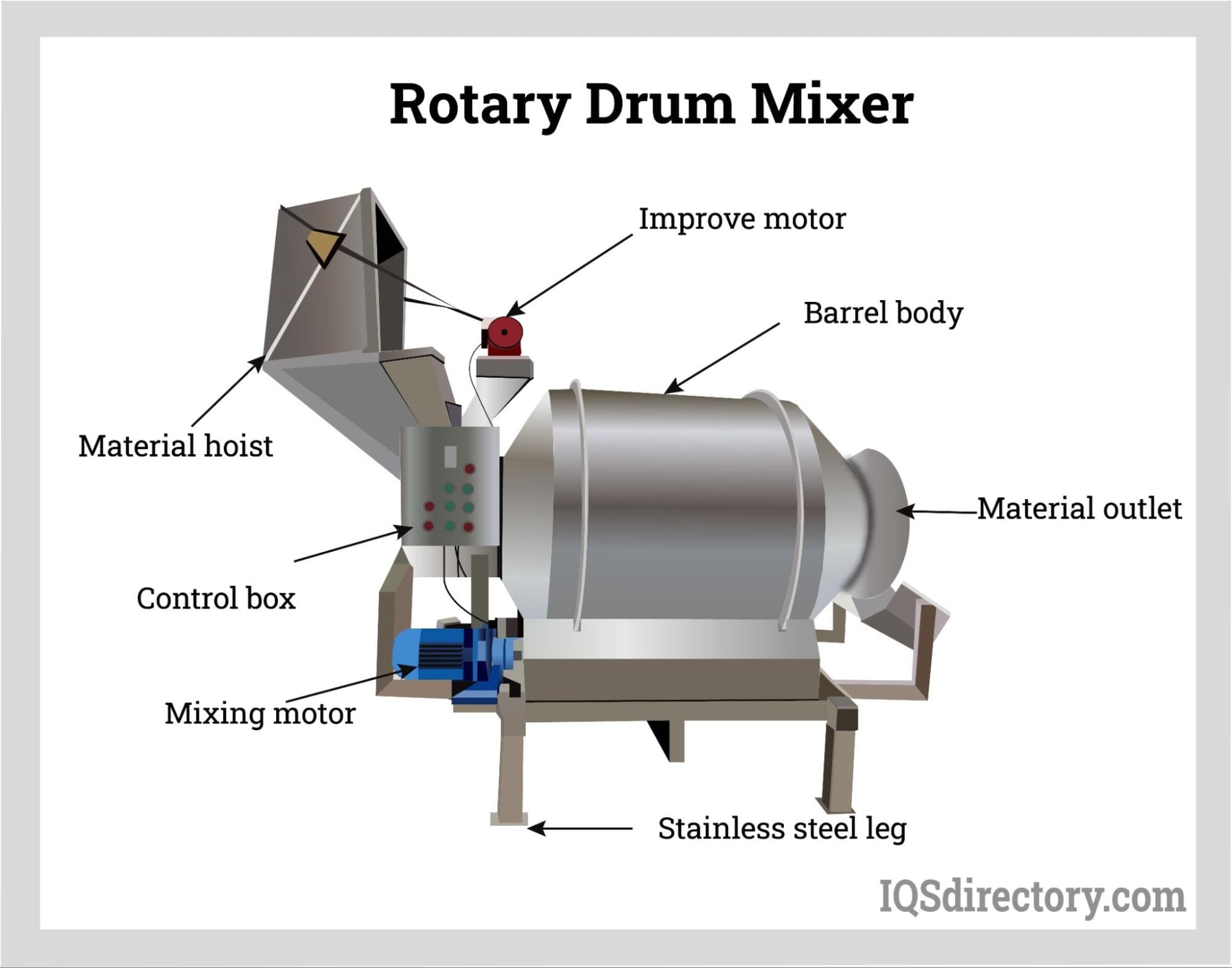
Drum mixers are mixers that are used for mixing free flowing materials by rotating them forward and reverse with welded chutes or flights that fluidize the mixture. The design of drum mixers gives them...
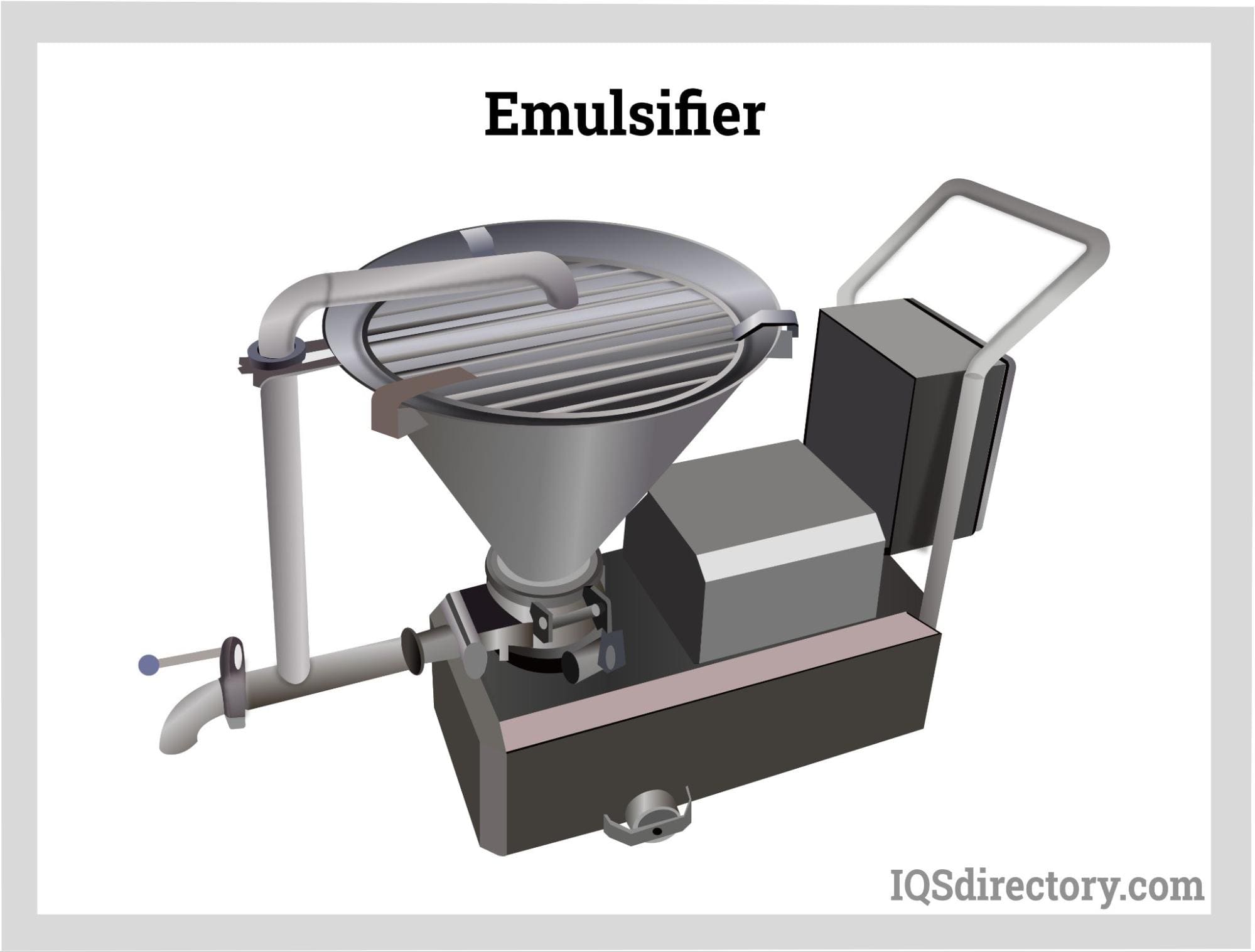
An emulsifier is an emulsion device used for colloidal dispersion of liquid droplets of immiscible liquids in the presence of an emulsifying agent. It enables the combining of non-soluble solutions or liquids...
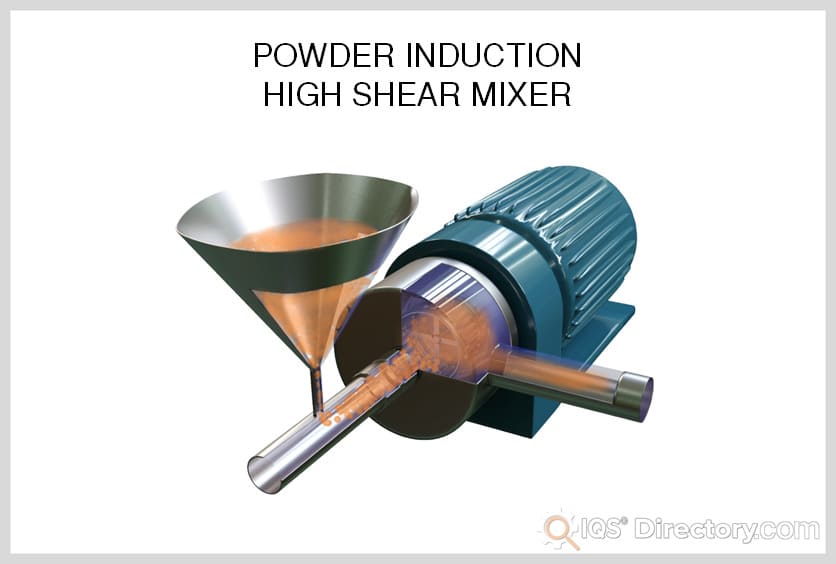
High shear mixers, also known as high shear reactors (HSRs), rotor-stator mixers, and high shear homogenizers, are used to emulsify, homogenize, disperse, grind and/or dissolve immiscible mixtures with components of the same or different phases...
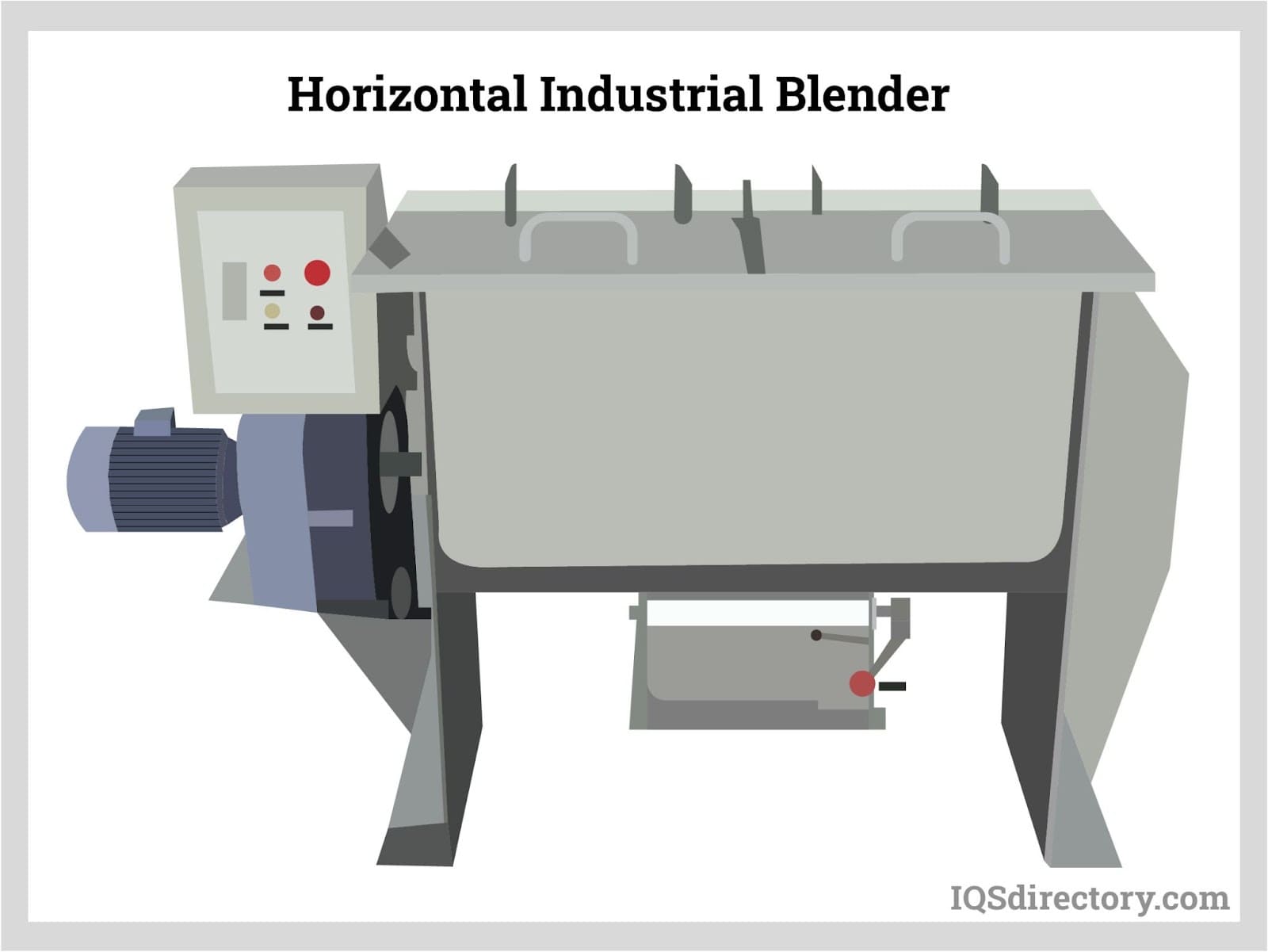
An industrial blender is a machine for large-scale production that consists of a large tank capable of mixing and blending batches of manufacturing materials to create a reaction between the materials. The many uses for industrial blenders are due to their capacity and...
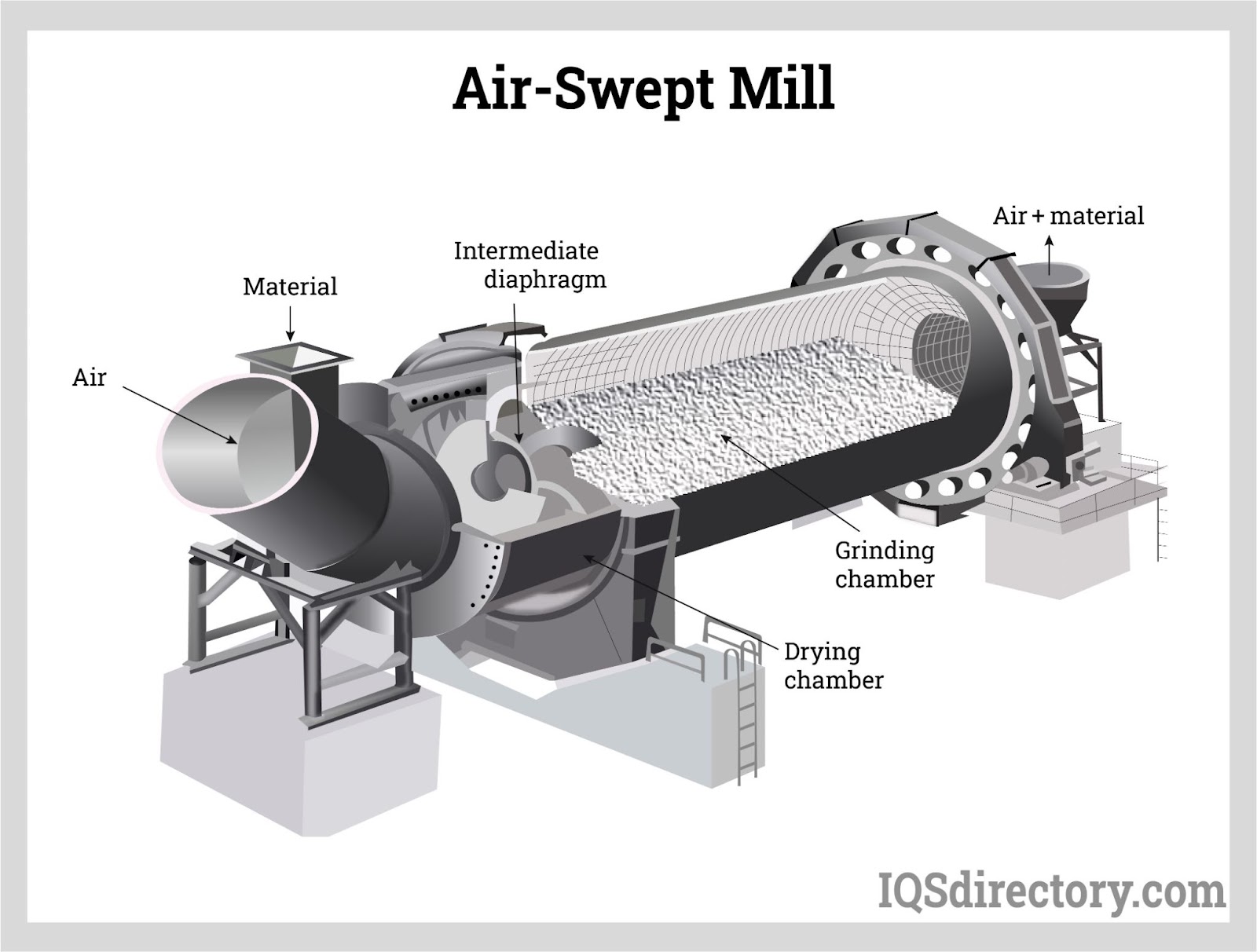
A mill is a mechanical device that is often a structure, appliance, or machine that is used to break down solid materials into smaller pieces by cutting, grinding, or crushing them. Many industrial processes involve...
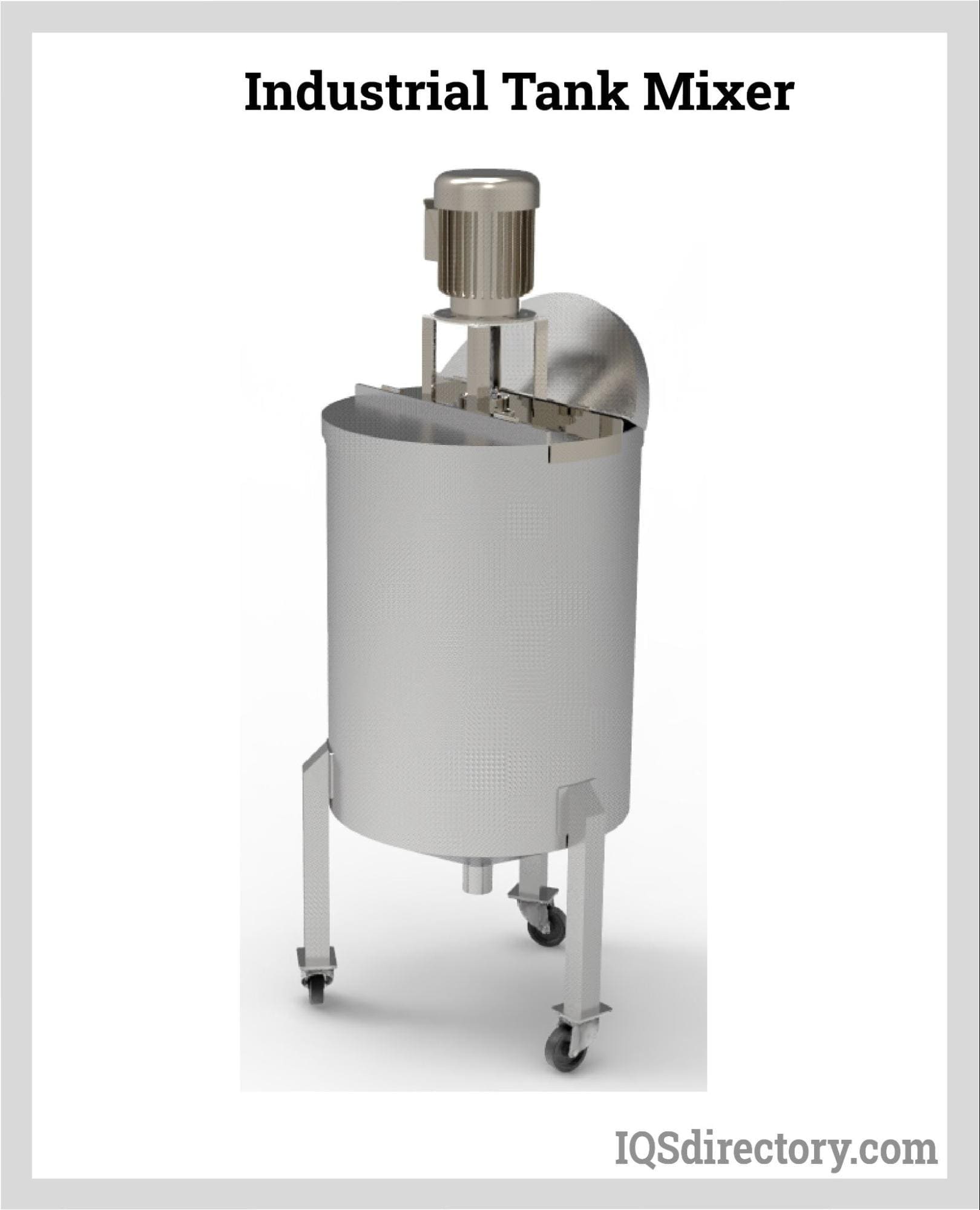
A tank mixer is a mixing device that blends several different ingredients in a single tank to make a single solution. It is a mixing process capable of mixing wettable powders, liquids, emulsifiable concentrates, and surfactants. They mix and blend...
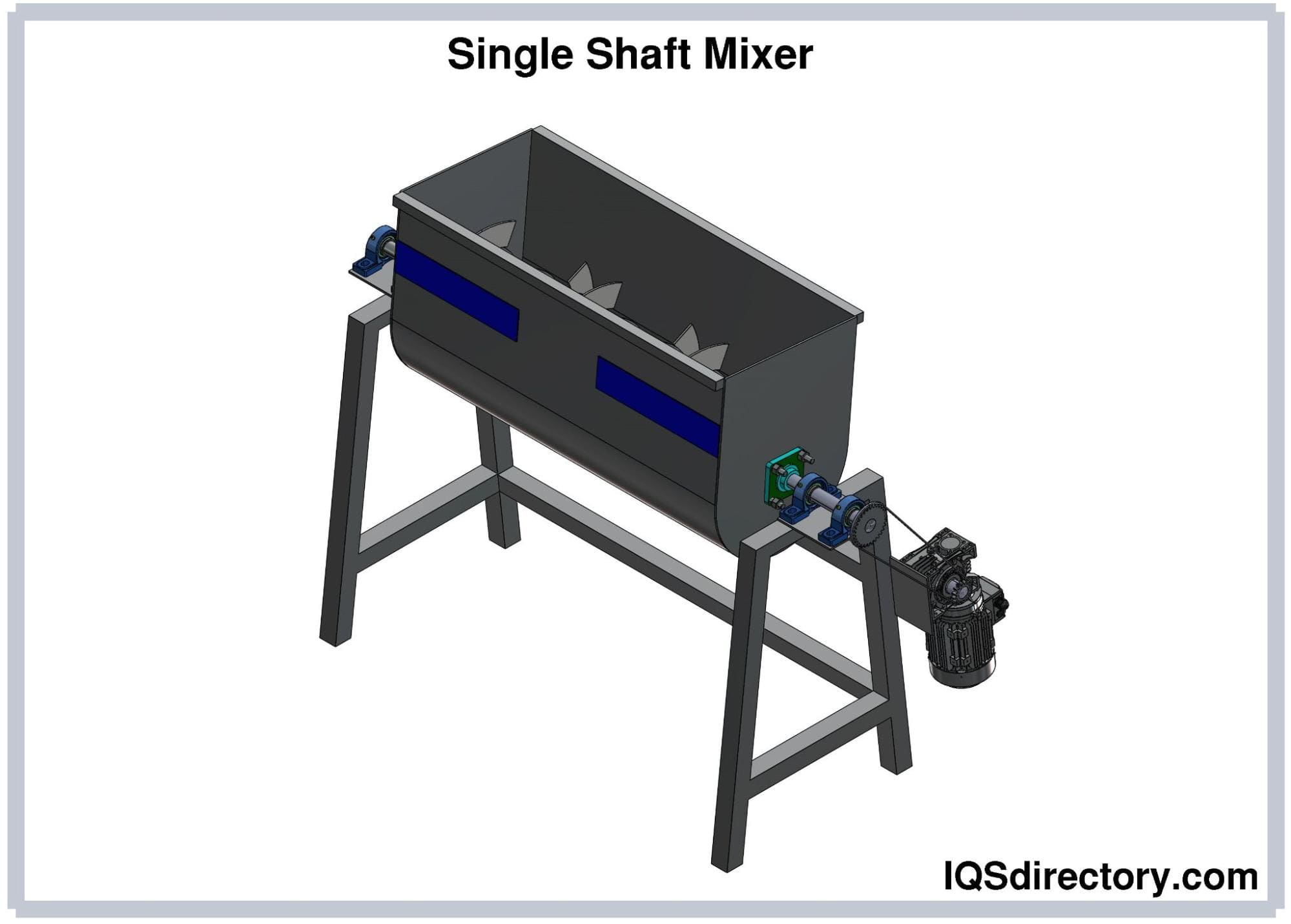
A mixer is a complex and precise tool that is used in combining and mixing of substances and chemicals for manufacturing, production, and industrial use. There are many types of industrial mixers including...

A plastic tank is a large capacity liquid or granular storage unit that can be vertical, horizontal, below or above ground, as well as movable. They are designed to hold several gallons of a variety of substances for long periods without experiencing wear, weathering, or deterioration...

A plastic water tank is a large capacity container designed to store water for household, agricultural, irrigation, and industrial manufacturing use. There are various types of water tanks produced to meet the needs of specific applications, with...
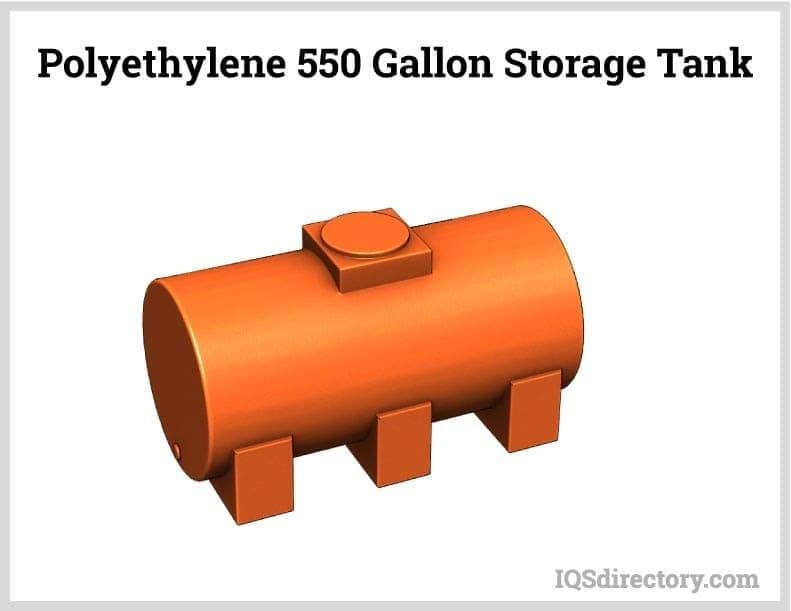
A poly tank is a plastic storage tank used to store, transport, and collect water, other liquids, and granular or powder materials. They are made of polyethylene or polypropylene and are a cost effective, lightweight, and easy to handle...
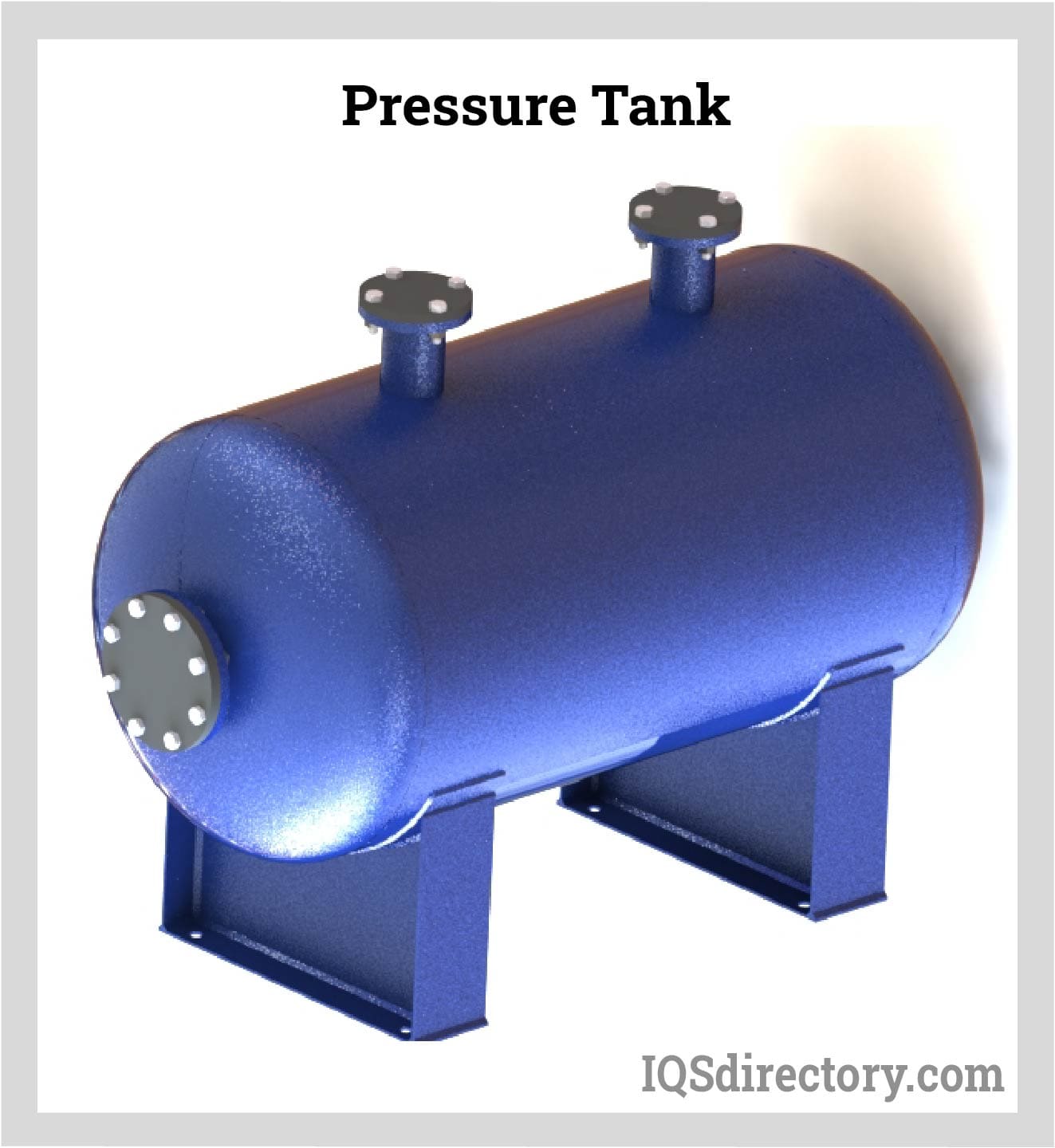
Pressure tanks are vessels that are used to store, hold, and/or convey gasses, vapors and fluids at pressures greater than atmospheric pressure, also known as high pressures...

Pressure vessels are enclosed containers used to hold liquids, vapors, and gases at a pressure significantly higher or lower than the ambient pressure. They are widely used in various industries such as...
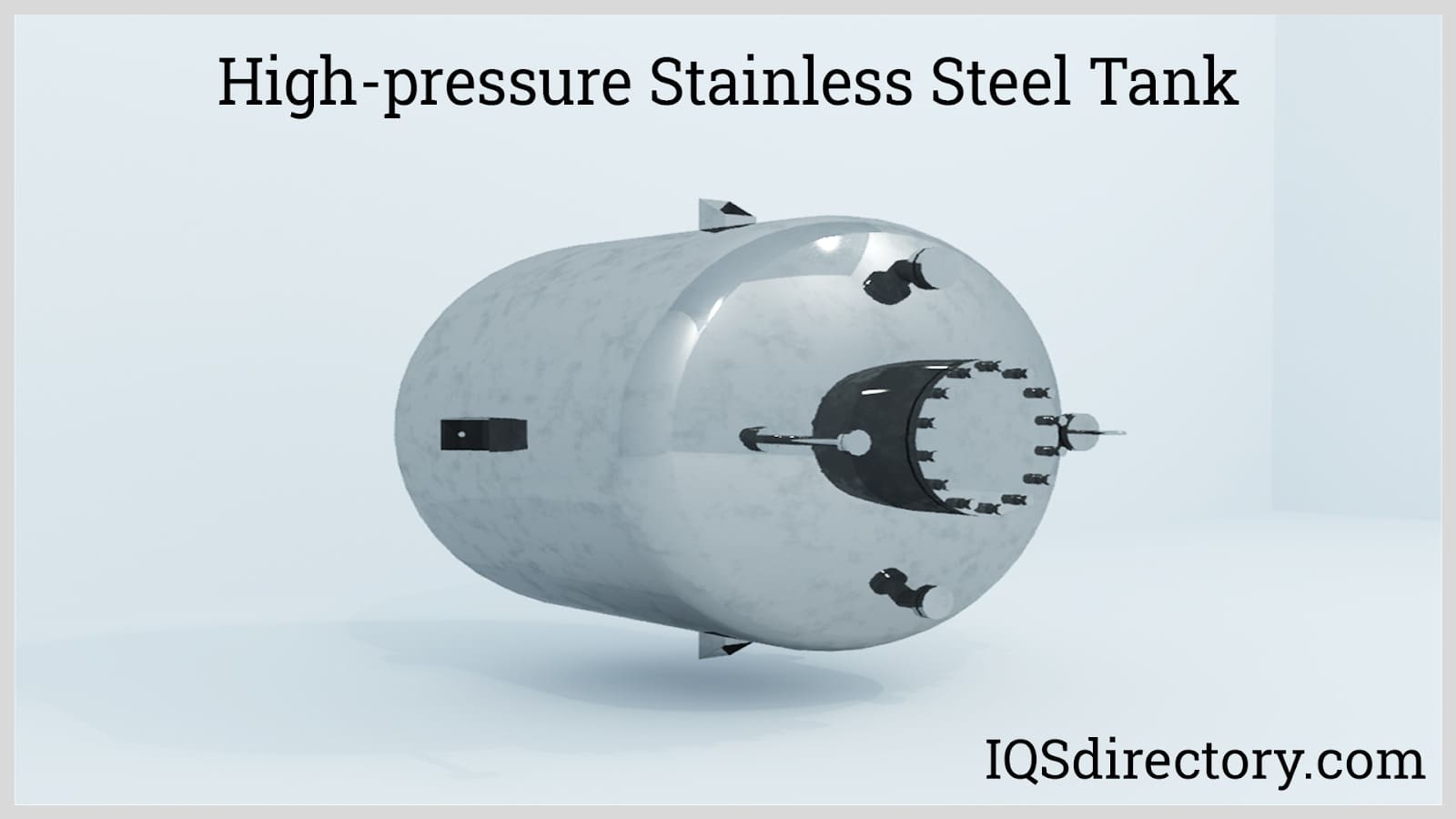
Stainless steel tanks are widely used in food, beverage, dairy, medicine, cosmetics, and other manufacturing processes where cleanliness and purity are important. These are also used in industrial plants for storing chemicals and gases where strong resistance from chemical degradation is required...